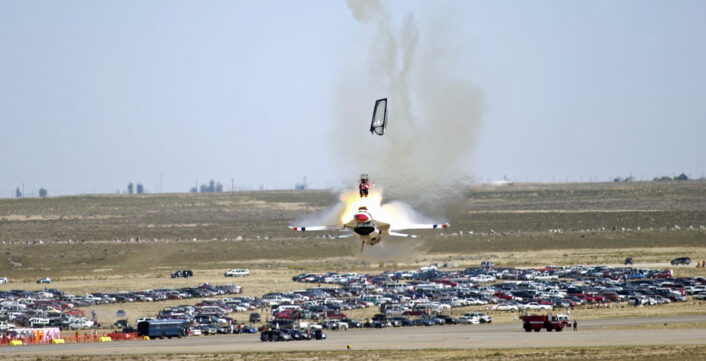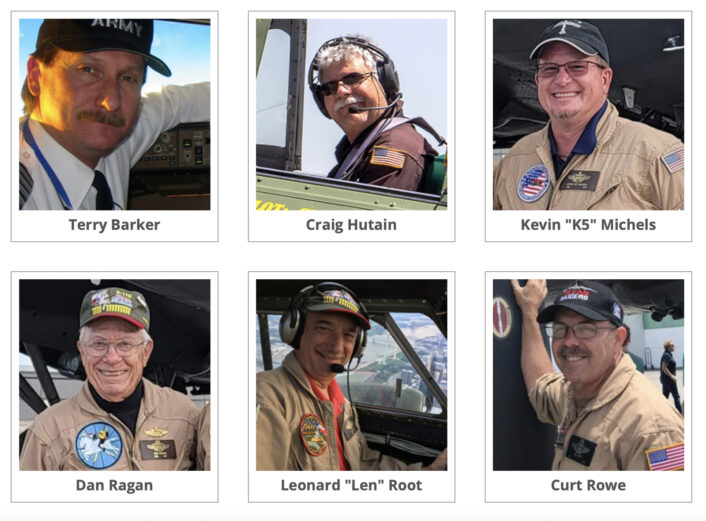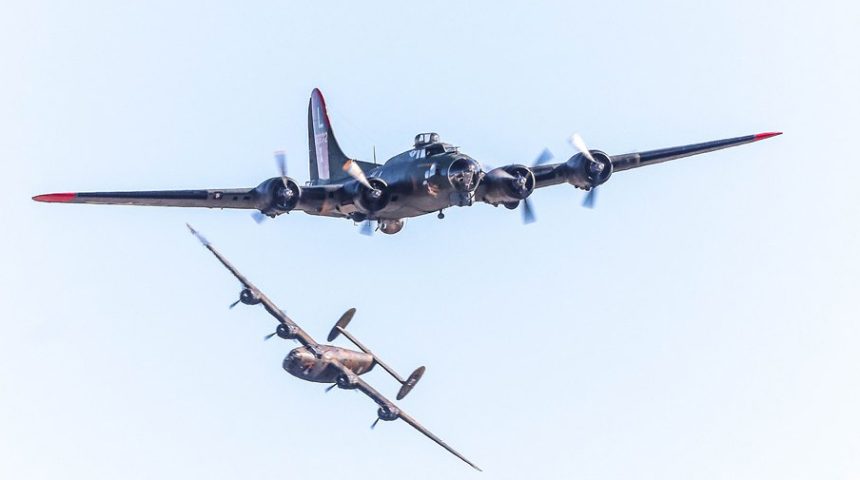The Texas Tragedy Raises Questions: Should Warbirds Be Flying? Are They Safe? Here Are All The Answers You Need.
It was a horrific scene that could have been even worse. Six people killed when two WWII aircraft collided in a fiery crash at an airshow in Texas on Saturday. The accident thrust the normally quiet vintage aircraft community into mainstream media. And the questions followed: What happened? Should these historic aircraft be flying? What are the rules that govern vintage “warbird” flight operations?
We won’t know the contributing factors to Saturday’s tragic accident at the Wings Over Dallas airshow at Dallas Executive Airport until the official investigations have concluded. As important as waiting for the investigations to release their findings, it’s critical to avoid the speculation across social media that so often follows a tragedy of such magnitude.
What we can do as we mourn the loss of six members of the airshow community and wait for the Federal Aviation Administration and other officials to conduct their investigations and assemble their findings, is to examine the history and rules of flight demonstration and vintage aircraft operations.
It’s hard to imagine an industry more regulated than the airshow industry. To start with, airshow operations are governed by massive volumes of both civilian and, depending on the aircraft performing, military flight regulations. Pilots flying in airshows must have a long list of advanced flight certifications that, depending on their aircraft and demonstration routine, may include advanced aerobatic certifications and certifications for formation flying. Additionally, these certifications must be renewed at specified intervals, usually annually, to maintain currency.
Even a high flight time, multi-engine, instrument and air transport certified commercial pilot lacks the specific FAA and military certifications to participate in a basic flight demonstration like the popular Air Force Heritage Flight and Navy’s Legacy Flight, where privately owned vintage WWII and Korean War era aircraft like the P-51 Mustang and F4U Corsair fly in formation with current U.S. military aircraft like the F-22 Raptor and F/A-18 Super Hornet. In fact, the U.S. Air Force has only one pilot currently certified to fly both the solo F-35A Lightning flight demonstration and the heritage flight in the F-35A.
In addition to pilot certifications for airshow performers, the venues for airshows are heavily regulated and strictly controlled. These controls are every bit as critical as demonstration pilot training and certification. For a venue to host a flight demonstration, they must hold and be in compliance with the massive Certificate of Waiver or Authorization (FAA Form 7711-1) for Airshow Ground Operations Plans issued by the Federal Aviation Administration. Additional requirements for military base airshows exist that include safety and security planning.
Beyond these ground regulations for an airshow venue, a massive, separate and additional set of rules, specifications and restrictions exist for the airspace above an airshow venue. These rules and restrictions are not only limited to obvious concerns such as air traffic control, they extend to things airshow spectators never consider such as wildlife interaction to avoid hazards like bird strike, and the environmental impact of aircraft noise, exhaust, fuel and waste handling.
Safety protocols for performing aircraft, especially warbirds, include another long list of FAA requirements for maintenance currency and certification. Earlier this year, TheAviationist spoke to Commemorative Air Force aircraft technician Mat Pedron, a member of the maintenance crew for the famous B-29 Superfortress “Fifi”. Pedron told us, “She gets more maintenance than any other aircraft, she’s the safest airplane flying”. In fact, maintenance for vintage warbird aircraft is not regular, it is constant. It is common to see WWII aircraft parked in static display areas undergoing routine cleaning and maintenance to insure airworthiness and to also monitor the condition of critical components and airframes.
At Edwards AFB in California, a warbird crew member told TheAviationist: “Even the [aircraft] parts we use are better than the originals. You can’t just go out and buy landing gear parts for a P-51. They have to be custom made. They’re not mass-produced. Everything on the airplane is better than original. The plane was built by teenage assembly workers trained in a few weeks in the 1940s. Now it’s rebuilt and kept flying by the best mechanics in the world”.
As with everything in the airshow industry, demonstration aircraft maintenance is heavily regulated by the FAA. And, there are separate and specific maintenance requirements governing the operation of “Vintage Aircraft”. The United States Department of Transportation’s FAA, “Vintage and Experimental Aircraft Program” contains a long list of specifications and requirements for every aspect of vintage aircraft operation.
However, compliance with the FAA requirements and inspections is central to maintaining aircraft safety. There have been instances when compliance and inspection regulations have failed and contributed to accidents.
On October 2, 2019, a Boeing B-17G Flying Fortress named “Nine-O-Nine” operated by the Collings Foundation crashed at Bradley International Airport in Windsor Locks, Connecticut. Of the thirteen passengers and crewmembers onboard the aircraft for a vintage aircraft ride experience, seven were killed. The remaining six passengers and crew and one person on the ground coming to the aid of crash victims also suffered injuries.
According to the official National Transportation Safety Board (NTSB) Aviation Investigation Final Report (Accident Number ERA20MA001) into the accident, there were numerous maintenance and operational oversights that contributed to the accident sequence. The final ruling in the investigation concluded that pilot error following an engine failure that was a result of inadequate maintenance were the predominant factors contributing to the accident and the fatalities in the crash. The accident happened during normal flight operations for the aircraft, not during an airshow. The Collings Foundation “Nine-O-Nine” B-17G crash led to numerous restrictions for warbird passenger flights until the investigation was concluded. According to airshow and warbird insiders, fallout from the accident has heavily influenced current warbird operations. One crewmember onboard a currently flying vintage aircraft told TheAviationist at a Midwest airshow this year, “It’s definitely safer now. It has to be, or we couldn’t keep flying”.
One question that has surfaced in the wake of airshow cancellations beginning in 2020 from the COVID-19 pandemic is whether the more than year-long cancellation for most airshows as a result of the pandemic had any effect on airshow operations. At least three safety concerns surfaced from interruption in aviation operations as a result of the pandemic: Did flight crews loose proficiency when airshows were cancelled? Were maintenance schedules on aircraft affected by the cancellation of airshows? And, did the return to a full airshow calendar after the pandemic place significant demands on a set of systems that had gone largely unused during the height of the pandemic?
There doesn’t appear to be any data compiled in the public space for questions about how the pandemic may have affected airshow safety. The airline industry did raise questions about the proficiency of returning pilots and the airworthiness of aircraft returning to regular passenger service following the pandemic. However, the operation of civilian passenger airliners is so significantly different from airshow demonstration aircraft and vintage aircraft that it’s difficult to draw meaningful comparisons. So, if the pandemic and the resultant cancellations of airshows from 2020 until 2022 did affect airshows in any way, it would appear that has not been measured yet.
One thing we do know about U.S. airshow regulations is that crowd safety is central to flight demonstration rules. Consider the tragic outcomes of accidents like the August 1988 midair collision of the Frecce Tricolori display team at Ramstein Airbase in Germany, resulting in a horrific 70 fatalities (67 on the ground, 3 in the aircraft), and the even worse July 2002 airshow disaster at Sknyliv Airfield outside Lviv, Ukraine, when a Sukhoi Su-27 crashed into the crowd killing 77 people – the worst airshow accident in history.
As a result of these and other airshow accidents, mostly outside the U.S., aircraft are required to maintain a specified distance from the airshow crowd line. One FAA rule governing crowd to demonstration area distance states that, “A fly-by can be performed by a single aircraft, by aircraft in formation, or by aircraft in trail, along show lines at a minimum horizontal distance of not less than 500 feet from spectator area(s), congested areas, or occupied buildings”.

In the case of this most recent airshow accident in Texas, there have been no physical injuries to spectators on the ground reported so far. The regulations about maintaining distance between demonstration aircraft and the crowd played a role in this outcome.
There is no doubt that even seeing such an accident in person and on media does, however, inflict significant psychological trauma on witnesses. In an email to Commemorative Air Force members on Monday, November 14, 2022, CAF President and CEO Hank Coates wrote, “In this email, you will find the names of the crewmen, ways to support the families, and resources available for families and friends. We appreciate the incredible support and condolences pouring in and are relaying your messages to all impacted by this tragic event”.
CAF President and CEO Hank Coates also wrote in his email that, “The International Council of Air Shows (ICAS) Foundation, in association with the CAF, is accepting donations for the families of those involved in the accident. To donate, please go to https://airshowfoundation.org/support/, select “Donation in honor or memory of an individual” and type “CAF” as the “Name of Memorialized”. 100% of the money collected through this effort will be provided to the families as emergency funding, with all received funds being split equally amongst those families impacted.”

Coates also took the additional step of including mental health resources in his email for those who are traumatized by witnessing the accident in person on through media exposure. “This is a tremendous loss for our organization and members. We encourage those impacted to seek our support, please contact your local Red Cross Disaster Mental Health or community mental health professional. You can also reach out to the National Disaster Distress Helpline by calling or texting to 1(800) 985-5990.”
On Monday, following the collision between the B-17 and the P-63 that occurred in Texas on Saturday, many airshow fans, photographers, spectators and performers took to social media to express grief and pay tribute to the pilots lost in the accident.
Also on Monday, November 14, 2022, the official website of the Commemorative Air Force posted a statement that reads, “The Commemorative Air Force has been authorized to confirm the names of the B-17 Flying Fortress and P-63 Kingcobra flight crews involved in the tragic accident at Wings Over Dallas.”
The names of the flight crew who died in Saturday’s accident according to the Commemorative Air Force official statement are: Terry Barker, Craig Hutain, Kevin Michels, Dan Ragan, Leonard Root and Curt Rowe.

One additional fact that is certain about the accident in Texas on Saturday is that the official investigations will be as detailed and thorough as the available evidence allows and, until those investigations are complete, we won’t know the specific circumstances that contributed to this tragedy.









